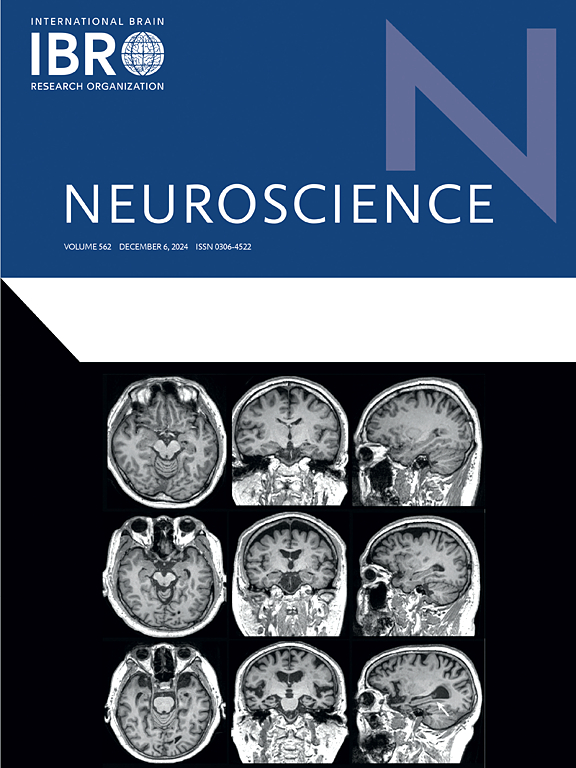Esketamine 对雄性大鼠重新获得吗啡偏好的有益影响
IF 2.9
3区 医学
Q2 NEUROSCIENCES
引用次数: 0
摘要
成瘾是一种慢性病,对公共卫生构成严重挑战,涉及吗啡等药物的全球阿片类药物危机尤其突出了这一点。有效戒毒的主要障碍之一是高复发率,许多人在停药后重新使用。迄今为止开发的药物治疗在解决物质使用障碍方面普遍显示出有限的功效。在这种情况下,艾氯胺酮(ESK), s -氯胺酮异构体,已被用于治疗难治性复发性抑郁症和有自杀风险的抑郁症。在我们的研究中,大鼠在morpho条件下的位置偏好(CPP)消退过程中每5天(急性- A-ESK)或每天(亚慢性- SC-ESK)接受两剂ESK治疗。10 天后,这些动物再次暴露于MORPH,以评估CPP范式下的偏好再习得。我们的研究结果表明,急性和亚慢性ESK (A-ESK和SC-ESK)都能有效地阻止morphp - cpp的重建。据我们所知,这是第一个证明ESK作为阿片类药物滥用障碍有希望的治疗方法的潜力的实验研究。需要临床研究来证实其在人类康复中心的疗效。本文章由计算机程序翻译,如有差异,请以英文原文为准。

Beneficial effects of Esketamine on Morphine preference reacquisition in male rats
Addiction is a chronic condition that poses a serious public health challenge, particularly highlighted by the global opioid crisis involving drugs such as morphine (MORPH). One of the major obstacles in effective detoxification is the high relapse rate, with many individuals resuming drug use after withdrawal. Pharmacological treatments developed so far have generally shown limited efficacy in addressing substance use disorder. In this context, esketamine (ESK), the S-ketamine isomer, has been used in cases of treatment-resistant recurrent depression and depression with suicide risk. In our study, rats were treated with two doses of ESK every five days (acute – A-ESK) or daily (sub-chronic – SC-ESK) during MORPH-conditioned place preference (CPP) extinction. After 10 days, the animals were re-exposed to MORPH to assess preference reacquisition in the CPP paradigm. Our findings showed that both acute and sub-chronic ESK (A-ESK and SC-ESK) effectively prevented MORPH-CPP reestablishment. To our knowledge, this is the first experimental study to demonstrate the potential of ESK as a promising treatment for opioid abuse disorder. Clinical studies are needed to confirm its efficacy in human rehabilitation centers.
求助全文
通过发布文献求助,成功后即可免费获取论文全文。
去求助
来源期刊

Neuroscience
医学-神经科学
CiteScore
6.20
自引率
0.00%
发文量
394
审稿时长
52 days
期刊介绍:
Neuroscience publishes papers describing the results of original research on any aspect of the scientific study of the nervous system. Any paper, however short, will be considered for publication provided that it reports significant, new and carefully confirmed findings with full experimental details.
 求助内容:
求助内容: 应助结果提醒方式:
应助结果提醒方式:


